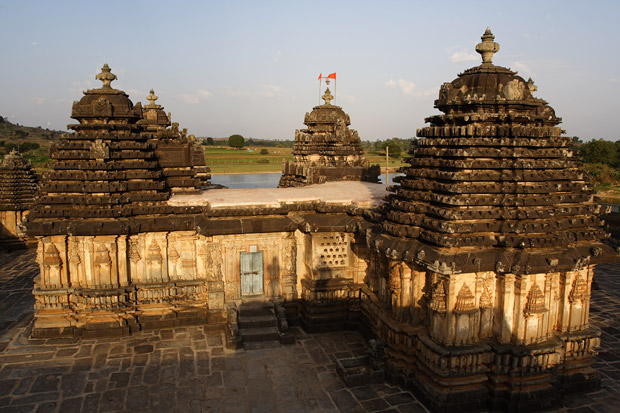Belur and Halebeedu
This article appeared in March issue of Terrascape
One would not expect to find a 900-year old temple in a non-descript village with a tongue twister name like Doddagaddavalli. Driving past gently undulating vistas sparingly dotted with stout trees and small irrigation ponds – they added a dash of beauty to the widespread vegetable fields – I suddenly encountered a colourful sign by the road that announced the presence of an ancient temple. Turning off the main road and going past a small village with its usual share of chickens and cows that blocked my way, I found myself gliding from the top of a mound, down an easy slope. At the base of the valley was a small black structure of stone, a temple with shrines rising up from all its corners, a saffron flags fluttering over one of those projections. Its location could not have been better, situated at the edge of the village overlooking a lake and visible from every crest of the wavy landscape that surrounded it.

Lakshmidevi Temple at Doddagaddavalli
The Lakshmidevi temple at Doddagaddavalli is just one of the thousands built by the Hoysala Kings who ruled a large part of South India for more than three hundred years. Returning here again a few weeks later with a small group of history-enthusiasts, I saw a few eyebrows going up in amazement when I casually mentioned that the Hoysala Kings built 1521 temples in 948 centres. It is not much, considering that it averages to about five temples every year during their long tenure of governance. But what is impressive is that 434 of these temples have survived even today, with the oldest of them built more than 1000-years ago, the most recent having survived no less than 600-years.